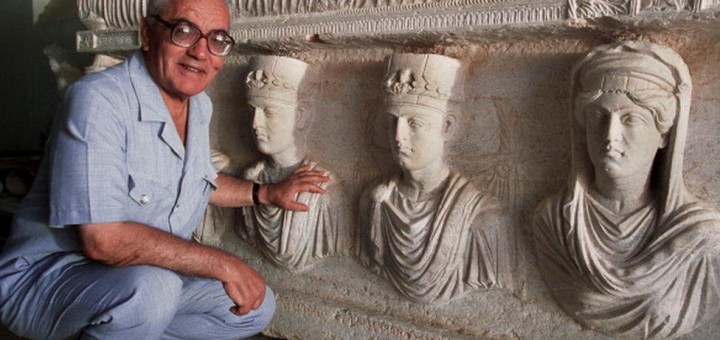ISIS militants have beheaded an 82-year-old archaeologist who had been in charge of overseeing the ancient site at Palmyra in Syria, a government official said Tuesday.
Syrian state antiquities chief Maamoun Abdulkarim told Reuters that the family of Khaled Asaad had informed Abdulkarim that Asaad had been beheaded earlier in the day and his body hanged from a column in the town’s main square.
Asaad’s death was also reported by the Britain-based Syrian Observatory for Human Rights. The Observatory, which has a network of activists on the ground in Syria, said dozens of people gathered to witness the killing.
Abdulkarim said that Asaad had been held and interrogated by members of the terror group for over a month before his death. The official said that Asaad’s captors had been looking for information about where the town’s treasures had been hidden to save them from ISIS, but they had no success getting the information from the scholar.
ISIS seized Palmyra, whose Roman-era ruins attracted thousands of tourists prior to Syria’s civil war, from government forces in May. In the days and weeks before the city fell, Syrian officials said they had moved hundreds of statues out of concern that they would be destroyed by ISIS fighters.
“Just imagine that such a scholar who gave such memorable services to the place and to history would be beheaded … and his corpse still hanging from one of the ancient columns in the center of a square in Palmyra,” Abdulkarim said. “The continued presence of these criminals in this city is a curse and bad omen on (Palmyra) and every column and every archaeological piece in it.”
Asaad spent over 50 years working at the UNESCO World Heritage site, including alongside U.S., French, German, and Swiss archaeological missions. He also wrote many books and scientific texts either individually or in cooperation with other Syrian or foreign archeologists, SANA said. Among his titles are “The Palmyra Sculptures,” and “Zenobia, the Queen of Palmyra and the Orient.”
Abdulkarim described Asaad as “one of the most important pioneers in Syrian archaeology in the 20th century.” The country’s official news agency SANA reported that Asaad had been in charge of Palmyra’s archaeological site for four decades until 2003, when he retired. After retiring, al-Asaad worked as an expert with the Antiquities and Museums Department.
Asaad, who held a diploma in history and education from the University of Damascus, also discovered several ancient cemeteries, caves and the Byzantine cemetery in the garden of the Museum of Palmyra, the agency reported.
“Al-Asaad was a treasure for Syria and the world,” Khalil Hariri from Palmyra’s archaeological department told The Associated Press, speaking over the phone from the central Syrian city of Homs. “Why did they kill him?”
“Their systematic campaign seeks to take us back into pre-history,” he added. “But they will not succeed.”
ISIS drew international condemnation after it released videos showing members destroying artifacts with hammers and drills in a museum in the northern Iraqi city of Mosul and using explosives to wreck other sites.
In March, ISIS members in Iraq razed 3,000-year old Nimrod and bulldozed 2,000-year old Hatra — both UNESCO world heritage sites. At the time, United Nations Secretary General Ban Ki-Moon described the action as a “war crime.”
However, it is not completely clear what ISIS has done with Palmyra’s Roman-era ruins. In June, ISIS blew up two shrines that did not date from Roman times, but were regarded by the militants as pagan and sacrilegious under their strict interpretation of Islam. One of the destroyed tombs belonged to a descendant of the Muslim prophet Muhammad’s cousin. ISIS also destroyed a lion statue in the town dating back to the 2nd century. The statue, discovered in 1975, had stood at the gates of the town museum, and had been placed inside a metal box to protect it from damage.
In early July, ISIS released a video showing the killing of some 20 captured government soldiers in Palmyra’s amphitheater. They were shot dead by young IS members, armed with pistols. Hundreds of people were seen watching the killings.
The Associated Press contributed to this report.
Source: FOXNews.com
BARBARIC MURDER ISIS beheads archaeologist for trying to save history
















Recent Comments